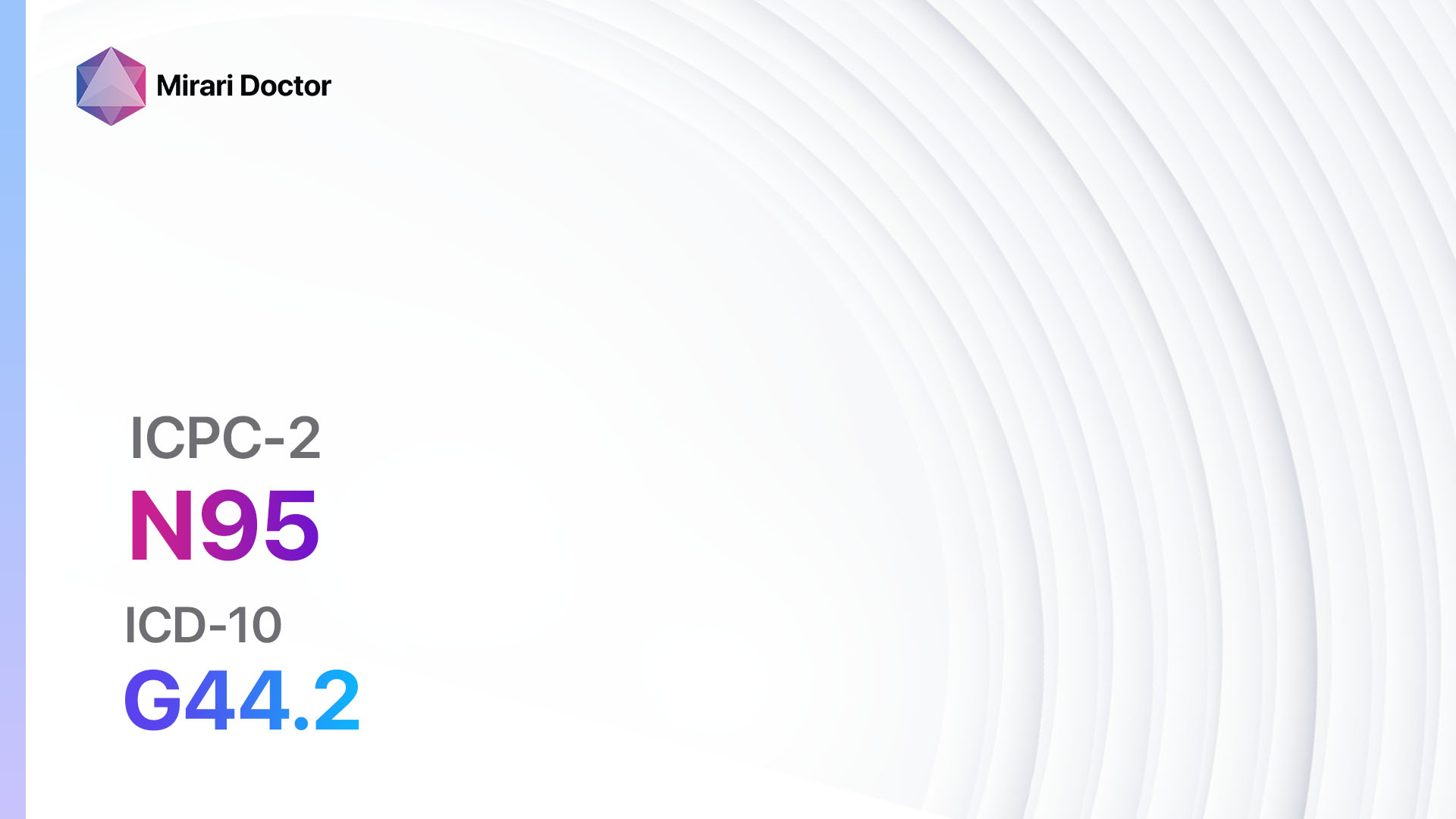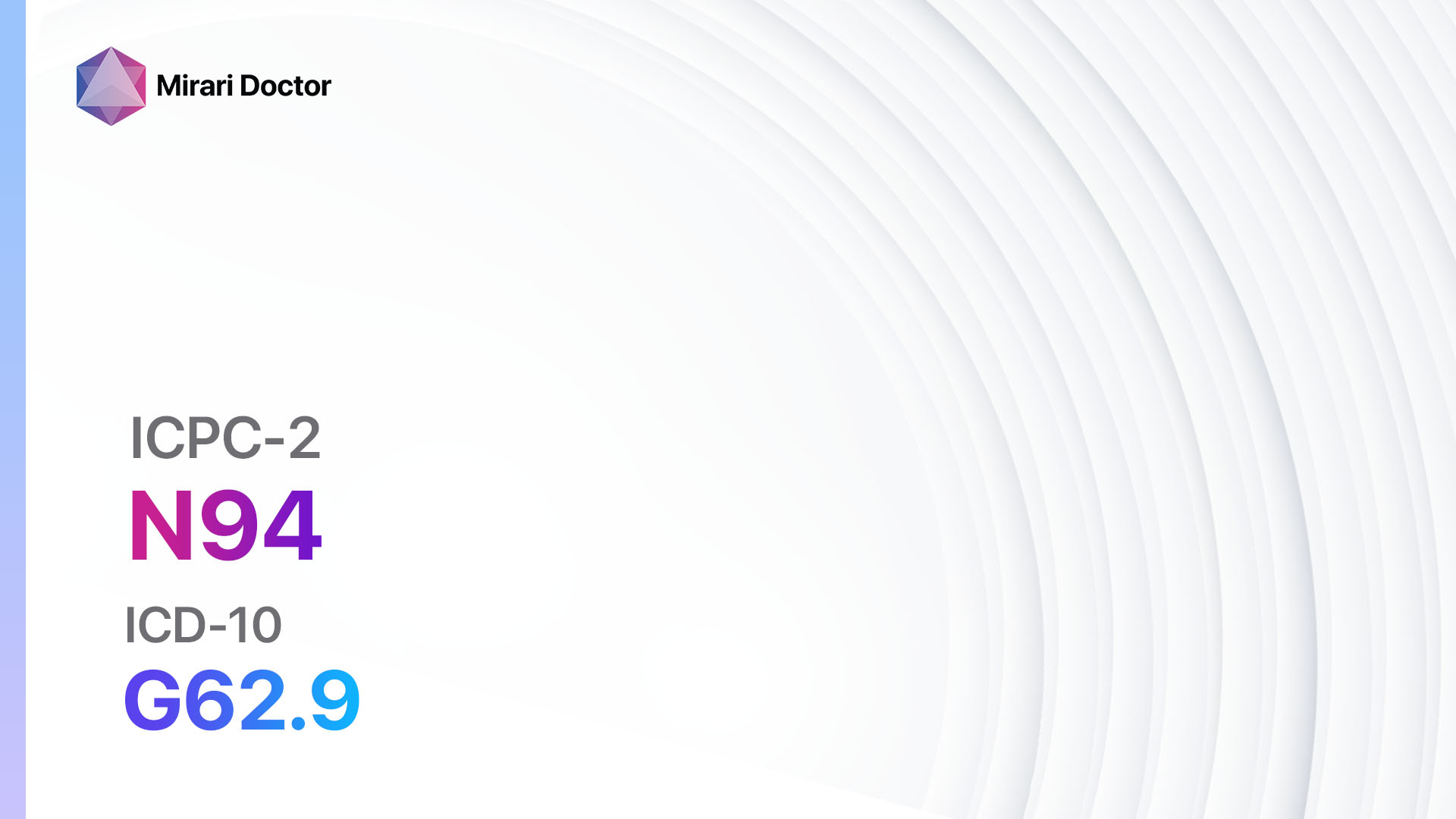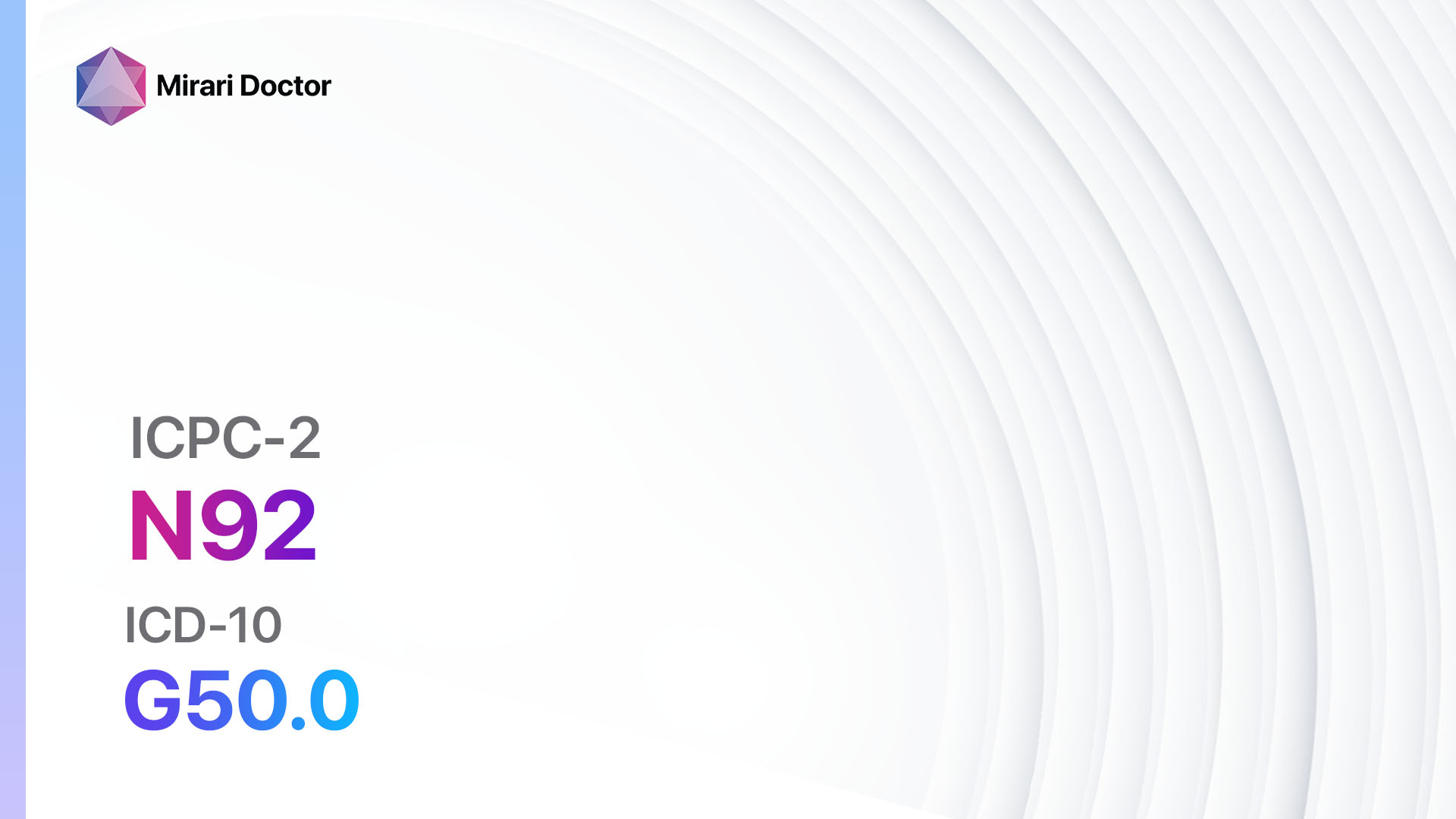
Introduction
Injury to the nervous system can have significant consequences and may result in various symptoms and complications. This guide aims to provide an overview of the diagnostic steps, possible interventions, and lifestyle modifications that can help manage and treat injury to the nervous system.
Codes
Symptoms
- Headache: Persistent or severe headaches may indicate injury to the nervous system.[1]
- Dizziness or vertigo: Feeling lightheaded or experiencing a spinning sensation can be a symptom of nervous system injury.[2]
- Numbness or tingling: Sensations of numbness or tingling in the extremities may be indicative of nerve damage.[3]
- Muscle weakness: Weakness or difficulty in moving certain muscles can be a sign of nervous system injury.[4]
- Loss of coordination: Difficulty in maintaining balance or coordinating movements may suggest nervous system damage.[2]
- Changes in vision: Blurred vision, double vision, or other visual disturbances can occur due to nervous system injury.[1]
- Cognitive changes: Memory problems, difficulty concentrating, or changes in thinking abilities may be associated with nervous system injury.[5]
Causes
- Trauma: Injuries to the head or spine, such as from accidents or falls, can result in nervous system damage.[6]
- Infections: Certain infections, such as meningitis or encephalitis, can affect the nervous system.[7]
- Tumors: Brain or spinal tumors can put pressure on the nervous system and cause injury.[8]
- Autoimmune disorders: Conditions like multiple sclerosis or Guillain-Barré syndrome can lead to nervous system damage.[9]
- Degenerative diseases: Conditions like Alzheimer’s disease or Parkinson’s disease can cause progressive nervous system injury.[10]
Diagnostic Steps
Medical History
- Gather information about the patient’s symptoms, their duration, and any triggering events.
- Inquire about any previous head or spinal injuries, infections, or chronic medical conditions.
- Assess the patient’s family history for any neurological disorders or hereditary conditions.
Physical Examination
- Perform a thorough neurological examination to assess reflexes, muscle strength, coordination, and sensory function.
- Evaluate the patient’s gait, balance, and posture.
- Check for any signs of injury or abnormalities in the head, neck, or spine.
Laboratory Tests
- Complete blood count (CBC): To assess for any signs of infection or inflammation.
- Blood chemistry panel: To evaluate organ function and rule out metabolic causes of symptoms.
- Lumbar puncture: To analyze cerebrospinal fluid for signs of infection or inflammation.
- Electromyography (EMG): To assess nerve and muscle function.
- Nerve conduction studies: To evaluate the speed and strength of nerve signals.
Diagnostic Imaging
- X-rays: To assess for fractures or other bony abnormalities in the head, neck, or spine.
- Computed tomography (CT) scan: To visualize the brain or spine and detect any structural abnormalities.
- Magnetic resonance imaging (MRI): To provide detailed images of the brain or spine and identify any lesions or tumors.
- Electroencephalogram (EEG): To record the electrical activity of the brain and detect any abnormalities.
Other Tests
- Genetic testing: To identify any hereditary conditions or genetic mutations that may contribute to nervous system injury.
- Biopsy: To obtain a tissue sample for analysis in cases of suspected tumors or infections.
- Neurophysiological testing: To assess nerve function and identify any abnormalities.
Follow-up and Patient Education
- Schedule regular follow-up appointments to monitor the patient’s progress and adjust treatment as needed.
- Provide education on the condition, its management, and any lifestyle modifications that may be necessary.
- Offer resources and support for coping with the emotional and psychological impact of nervous system injury.
Possible Interventions
Traditional Interventions
Medications:
Top 5 drugs for nervous system injury:
- Pain relievers (e.g., Acetaminophen, Ibuprofen):
- Cost: Generic versions can be $3-$10/month.
- Contraindications: Allergy to the medication, history of gastrointestinal bleeding.
- Side effects: Upset stomach, liver damage (with prolonged use).
- Severe side effects: Allergic reactions, kidney damage (with prolonged use).
- Drug interactions: Blood thinners, certain antidepressants.
- Warning: Do not exceed recommended dosage.
- Anticonvulsants (e.g., Gabapentin, Pregabalin):
- Cost: Generic versions can be $10-$50/month.
- Contraindications: Allergy to the medication, history of kidney problems.
- Side effects: Drowsiness, dizziness.
- Severe side effects: Suicidal thoughts, severe allergic reactions.
- Drug interactions: Opioids, certain antidepressants.
- Warning: May cause dependence or withdrawal symptoms.
- Muscle relaxants (e.g., Baclofen, Tizanidine):
- Cost: Generic versions can be $10-$50/month.
- Contraindications: Allergy to the medication, history of liver problems.
- Side effects: Drowsiness, dizziness.
- Severe side effects: Hallucinations, seizures.
- Drug interactions: Sedatives, certain antidepressants.
- Warning: Avoid alcohol while taking this medication.
- Steroids (e.g., Prednisone, Dexamethasone):
- Cost: Generic versions can be $10-$50/month.
- Contraindications: Allergy to the medication, active infections.
- Side effects: Increased appetite, weight gain.
- Severe side effects: Increased risk of infections, osteoporosis.
- Drug interactions: Nonsteroidal anti-inflammatory drugs (NSAIDs), certain antibiotics.
- Warning: Do not stop taking abruptly; taper off gradually.
- Antidepressants (e.g., Selective serotonin reuptake inhibitors (SSRIs), Tricyclic antidepressants):
- Cost: Generic versions can be $10-$50/month.
- Contraindications: Allergy to the medication, history of seizures.
- Side effects: Nausea, drowsiness.
- Severe side effects: Suicidal thoughts, serotonin syndrome.
- Drug interactions: Monoamine oxidase inhibitors (MAOIs), certain pain medications.
- Warning: May take several weeks to see the full effect.
Alternative Drugs:
- Cannabinoids (e.g., Cannabidiol): Used for pain relief and muscle spasticity.
- NMDA receptor antagonists (e.g., Memantine): May help with nerve pain.
- Antidepressants (e.g., Duloxetine): Can be used for neuropathic pain.
- Anticonvulsants (e.g., Carbamazepine): Useful for nerve-related pain.
- Opioids (e.g., Oxycodone): Reserved for severe pain when other options have failed.
Surgical Procedures:
- Nerve decompression surgery: Relieves pressure on nerves and can help alleviate symptoms. Cost: $5,000 to $20,000.
- Spinal fusion: Stabilizes the spine and can help with nerve compression. Cost: $50,000 to $100,000.
- Deep brain stimulation: Involves implanting electrodes in the brain to help manage movement disorders. Cost: $100,000 to $150,000.
Alternative Interventions
- Acupuncture: May help reduce pain and improve nerve function. Cost: $60-$120 per session.
- Chiropractic care: Can help with spinal alignment and nerve function. Cost: $50-$200 per session.
- Physical therapy: Exercises and techniques to improve strength, flexibility, and nerve function. Cost: $50-$150 per session.
- Massage therapy: Can help relax muscles and improve circulation. Cost: $50-$100 per session.
- Transcutaneous electrical nerve stimulation (TENS): Uses low-voltage electrical currents to relieve pain. Cost: $50-$100 for a TENS unit.
Lifestyle Interventions
- Regular exercise: Helps improve circulation, strength, and overall nerve function. Cost: Varies (e.g., gym membership, exercise equipment).
- Healthy diet: Provides essential nutrients for nerve health. Cost: Varies depending on food choices.
- Stress management: Reduces the impact of stress on the nervous system. Cost: Varies (e.g., meditation apps, therapy).
- Adequate sleep: Promotes nerve repair and regeneration. Cost: Varies (e.g., comfortable bedding, sleep aids).
- Avoidance of harmful substances: Alcohol and tobacco can worsen nerve damage. Cost: Varies (e.g., smoking cessation aids).
It is important to note that the cost ranges provided are approximate and may vary depending on the location and availability of the interventions. It is recommended to consult with healthcare professionals for personalized treatment options and cost estimates.
Mirari Cold Plasma Alternative Intervention
Understanding Mirari Cold Plasma
- Safe and Non-Invasive Treatment: Mirari Cold Plasma is a safe and non-invasive treatment option for various skin conditions. It does not require incisions, minimizing the risk of scarring, bleeding, or tissue damage.
- Efficient Extraction of Foreign Bodies: Mirari Cold Plasma facilitates the removal of foreign bodies from the skin by degrading and dissociating organic matter, allowing easier access and extraction.
- Pain Reduction and Comfort: Mirari Cold Plasma has a local analgesic effect, providing pain relief during the treatment, making it more comfortable for the patient.
- Reduced Risk of Infection: Mirari Cold Plasma has antimicrobial properties, effectively killing bacteria and reducing the risk of infection.
- Accelerated Healing and Minimal Scarring: Mirari Cold Plasma stimulates wound healing and tissue regeneration, reducing healing time and minimizing the formation of scars.
Mirari Cold Plasma Prescription
Video instructions for using Mirari Cold Plasma Device – N81 Injury nervous system other (ICD-10:T14.9)
| Mild | Moderate | Severe |
| Mode setting: 1 (Infection) Location: 0 (Localized) Morning: 15 minutes, Evening: 15 minutes |
Mode setting: 1 (Infection) Location: 0 (Localized) Morning: 30 minutes, Lunch: 30 minutes, Evening: 30 minutes |
Mode setting: 1 (Infection) Location: 0 (Localized) Morning: 30 minutes, Lunch: 30 minutes, Evening: 30 minutes |
| Mode setting: 2 (Wound Healing) Location: 0 (Localized) Morning: 15 minutes, Evening: 15 minutes |
Mode setting: 2 (Wound Healing) Location: 0 (Localized) Morning: 30 minutes, Lunch: 30 minutes, Evening: 30 minutes |
Mode setting: 2 (Wound Healing) Location: 0 (Localized) Morning: 30 minutes, Lunch: 30 minutes, Evening: 30 minutes |
| Mode setting: 3 (Antiviral Therapy) Location: 0 (Localized) Morning: 15 minutes, Evening: 15 minutes |
Mode setting: 3 (Antiviral Therapy) Location: 0 (Localized) Morning: 30 minutes, Lunch: 30 minutes, Evening: 30 minutes |
Mode setting: 3 (Antiviral Therapy) Location: 0 (Localized) Morning: 30 minutes, Lunch: 30 minutes, Evening: 30 minutes |
| Mode setting: 7 (Immunotherapy) Location: 7 (Neuro system & ENT) Morning: 15 minutes, Evening: 15 minutes |
Mode setting: 7 (Immunotherapy) Location: 7 (Neuro system & ENT) Morning: 30 minutes, Lunch: 30 minutes, Evening: 30 minutes |
Mode setting: 7 (Immunotherapy) Location: 7 (Neuro system & ENT) Morning: 30 minutes, Lunch: 30 minutes, Evening: 30 minutes |
| Total Morning: 60 minutes approx. $10 USD, Evening: 60 minutes approx. $10 USD |
Total Morning: 120 minutes approx. $20 USD, Lunch: 120 minutes approx. $20 USD, Evening: 120 minutes approx. $20 USD, |
Total Morning: 120 minutes approx. $20 USD, Lunch: 120 minutes approx. $20 USD, Evening: 120 minutes approx. $20 USD, |
| Usual treatment for 7-60 days approx. $140 USD – $1200 USD | Usual treatment for 6-8 weeks approx. $2,520 USD – $3,360 USD |
Usual treatment for 3-6 months approx. $5,400 USD – $10,800 USD
|
 |
|
Use the Mirari Cold Plasma device to treat Injury nervous system other effectively.
WARNING: MIRARI COLD PLASMA IS DESIGNED FOR THE HUMAN BODY WITHOUT ANY ARTIFICIAL OR THIRD PARTY PRODUCTS. USE OF OTHER PRODUCTS IN COMBINATION WITH MIRARI COLD PLASMA MAY CAUSE UNPREDICTABLE EFFECTS, HARM OR INJURY. PLEASE CONSULT A MEDICAL PROFESSIONAL BEFORE COMBINING ANY OTHER PRODUCTS WITH USE OF MIRARI.
Step 1: Cleanse the Skin
- Start by cleaning the affected area of the skin with a gentle cleanser or mild soap and water. Gently pat the area dry with a clean towel.
Step 2: Prepare the Mirari Cold Plasma device
- Ensure that the Mirari Cold Plasma device is fully charged or has fresh batteries as per the manufacturer’s instructions. Make sure the device is clean and in good working condition.
- Switch on the Mirari device using the power button or by following the specific instructions provided with the device.
- Some Mirari devices may have adjustable settings for intensity or treatment duration. Follow the manufacturer’s instructions to select the appropriate settings based on your needs and the recommended guidelines.
Step 3: Apply the Device
- Place the Mirari device in direct contact with the affected area of the skin. Gently glide or hold the device over the skin surface, ensuring even coverage of the area experiencing.
- Slowly move the Mirari device in a circular motion or follow a specific pattern as indicated in the user manual. This helps ensure thorough treatment coverage.
Step 4: Monitor and Assess:
- Keep track of your progress and evaluate the effectiveness of the Mirari device in managing your Injury nervous system other. If you have any concerns or notice any adverse reactions, consult with your health care professional.
Note
This guide is for informational purposes only and should not replace the advice of a medical professional. Always consult with your healthcare provider or a qualified medical professional for personal advice, diagnosis, or treatment. Do not solely rely on the information presented here for decisions about your health. Use of this information is at your own risk. The authors of this guide, nor any associated entities or platforms, are not responsible for any potential adverse effects or outcomes based on the content.
Mirari Cold Plasma System Disclaimer
- Purpose: The Mirari Cold Plasma System is a Class 2 medical device designed for use by trained healthcare professionals. It is registered for use in Thailand and Vietnam. It is not intended for use outside of these locations.
- Informational Use: The content and information provided with the device are for educational and informational purposes only. They are not a substitute for professional medical advice or care.
- Variable Outcomes: While the device is approved for specific uses, individual outcomes can differ. We do not assert or guarantee specific medical outcomes.
- Consultation: Prior to utilizing the device or making decisions based on its content, it is essential to consult with a Certified Mirari Tele-Therapist and your medical healthcare provider regarding specific protocols.
- Liability: By using this device, users are acknowledging and accepting all potential risks. Neither the manufacturer nor the distributor will be held accountable for any adverse reactions, injuries, or damages stemming from its use.
- Geographical Availability: This device has received approval for designated purposes by the Thai and Vietnam FDA. As of now, outside of Thailand and Vietnam, the Mirari Cold Plasma System is not available for purchase or use.
References
- Healthline. (2023). Nervous System Diseases: Types, Causes, Examples. Retrieved from https://www.healthline.com/health/nervous-system-diseases
- Mayo Clinic. (2024). Peripheral nerve injuries – Symptoms and causes. Retrieved from https://www.mayoclinic.org/diseases-conditions/peripheral-nerve-injuries/symptoms-causes/syc-20355631
- WebMD. (2024). Nerve Pain and Nerve Damage – WebMD: Neurological Symptoms. Retrieved from https://www.webmd.com/brain/nerve-pain-and-nerve-damage-symptoms-and-causes
- Cleveland Clinic. (2023). Nervous System: What It Is, Parts, Function & Disorders. Retrieved from https://my.clevelandclinic.org/health/body/21202-nervous-system
- MSD Manuals. (2024). Introduction to Symptoms of Brain, Spinal Cord, and Nerve Disorders. Retrieved from https://www.msdmanuals.com/home/brain,-spinal-cord,-and-nerve-disorders/symptoms-of-brain,-spinal-cord,-and-nerve-disorders/introduction-to-symptoms-of-brain,-spinal-cord,-and-nerve-disorders
- Mayo Clinic Health System. (2024). Treating, repairing nervous system. Retrieved from https://www.mayoclinichealthsystem.org/hometown-health/speaking-of-health/treating-repairing-nervous-system
- National Institute of Neurological Disorders and Stroke. (2024). Neurological Diagnostic Tests and Procedures. Retrieved from https://www.ninds.nih.gov/health-information/disorders/neurological-diagnostic-tests-and-procedures
- American Association of Neurological Surgeons. (2024). Tumors of the Nervous System. Retrieved from https://www.aans.org/en/Patients/Neurosurgical-Conditions-and-Treatments/Tumors-of-the-Nervous-System
- National Multiple Sclerosis Society. (2024). What is MS? Retrieved from https://www.nationalmssociety.org/What-is-MS
- Alzheimer’s Association. (2024). What is Alzheimer’s Disease? Retrieved from https://www.alz.org/alzheimers-dementia/what-is-alzheimers
Related articles
Made in USA



























